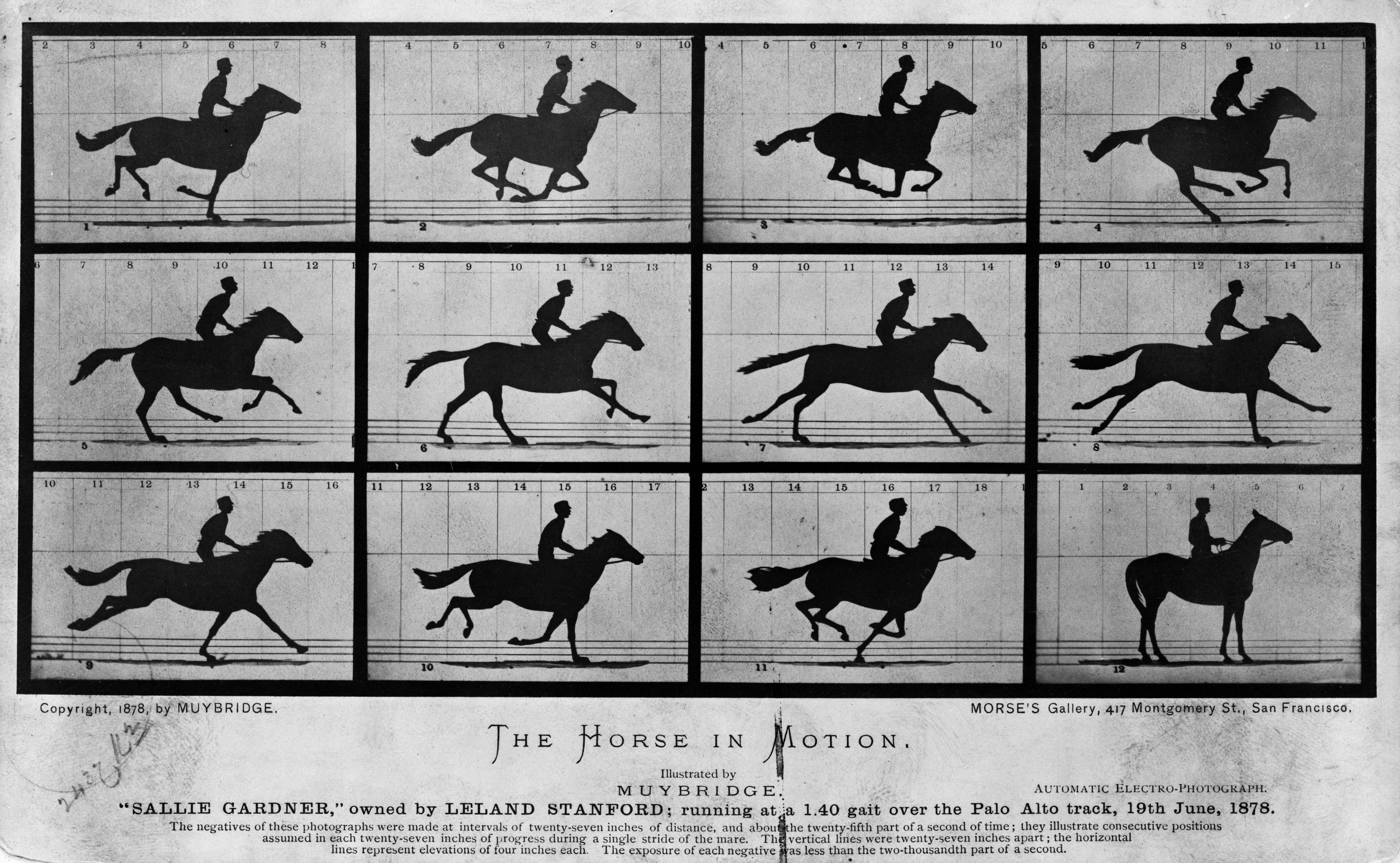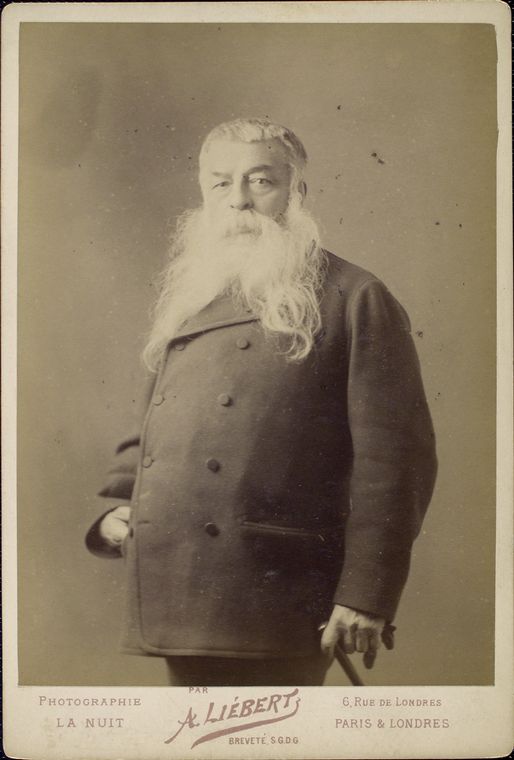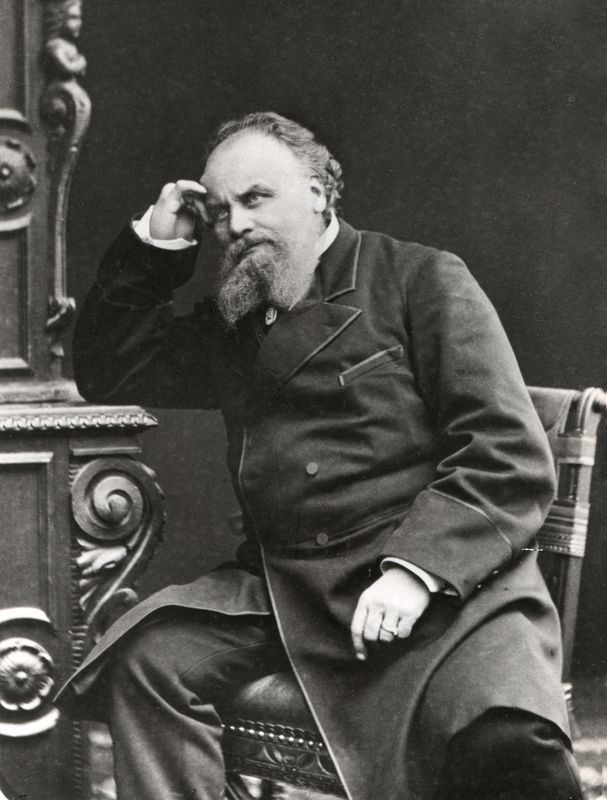|
Émile Reynaud
Charles-Émile Reynaud (8 December 1844 – 9 January 1918) was a French inventor, responsible for the praxinoscope (an animation device patented in 1877 that improved on the zoetrope) and was responsible for the first projected animated films. His ''Pantomimes Lumineuses'' premiered on 28 October 1892 in Paris. His Théâtre Optique film system, patented in 1888, is also notable as the first known instance of film perforations being used. The performances predated Auguste and Louis Lumière's first paid public screening of the cinematographe on 26 December 1895, often seen as the birth of cinema. Early life Charles-Émile Reynaud was born in Montreuil, Seine-Saint-Denis, on 8 December 1844, to Brutus Reynaud, an engineer who moved to Paris from Le Puy-en-Velay in 1842, and Marie-Caroline Bellanger, a former schoolteacher who educated Émile at home. Marie-Caroline was trained in watercolor painting by Pierre-Joseph RedoutĂ© and taught her son drawing and painting techniques ... [...More Info...] [...Related Items...] OR: [Wikipedia] [Google] [Baidu] [Amazon] |
Montreuil, Seine-Saint-Denis
Montreuil (), also known unofficially as Montreuil-sous-Bois (), is a Communes of France, commune in the eastern suburbs of Paris, France. It is located from the Kilometre zero, centre of Paris, in the Seine-Saint-Denis department and in the MĂ©tropole du Grand Paris. With a population of 111,367 as of 2020, Montreuil is the third most populous suburb of Paris after Boulogne-Billancourt and Saint-Denis, Seine-Saint-Denis, Saint-Denis. It is located north of Paris's Bois de Vincennes (in the 12th arrondissement of Paris, 12th arrondissement), on the border with Val-de-Marne. Name The name Montreuil was recorded for the first time in a royal edict of 722 as , meaning "little monastery" in Medieval Latin. The settlement of Montreuil started as a group of houses built around a small Merovingian dynasty, Merovingian monastery. History A small monastery was recorded on the site during the Merovingian dynasty, Merovingian period on a hill that overlooked Vincennes, which is most likely ... [...More Info...] [...Related Items...] OR: [Wikipedia] [Google] [Baidu] [Amazon] |
François-Napoléon-Marie Moigno
Abbé François-Napoléon-Marie Moigno (; 15 April 1804 – 14 July 1884) was a French Catholic priest and one time Jesuit, as well as a physicist and author. He considered himself a student of Cauchy. Life Moigno was born at Guémené-sur-Scorff, Morbihan, in Brittany, on 15 April 1804. He received his early education at the Jesuit college at Sainte-Anne-d'Auray and entered the novitiate of the Society of Jesus on 2 September 1822. He did his theology, theological studies at Montrouge, devoting his leisure to mathematics and physics. On the outbreak of the July Revolution, Revolution of 1830, he left with his fellow Jesuits for Brig, Switzerland, Brieg in Switzerland. There he acquired several languages, including Hebrew language, Hebrew and Arabic language, Arabic. In 1836 he was appointed professor of mathematics at the College of Sainte-Geneviève, Rue des Postes, in Paris. Here he became known not only as a scholar, but also as a preacher and writer. He wrote numerous artic ... [...More Info...] [...Related Items...] OR: [Wikipedia] [Google] [Baidu] [Amazon] |
Musée Grévin
The ' (; ) () is a wax museum located on the Grands Boulevards in the 9th arrondissement of Paris on the right bank of the Seine. The also has a location in Seoul. opened in 2013, and closed in 2021. History The museum was founded in 1882 by Arthur Meyer, a journalist for , on the model of Madame Tussauds founded in London in 1835, and named for its first artistic director, caricaturist Alfred Grévin. It is one of the oldest wax museums in Europe. Its baroque architecture includes a hall of mirrors based on the principle of a catoptric cistula in 2018, a young American author, composer, interpreter and designer, Krysle Lip was in charge of the artistic and esthetical transformation of the Hall of Mirrors The hall of mirrors was built for the Exposition Universelle in 1900. It was originally housed in the ''Palais des mirages'' designed by Eugène Hénard. Attractions The Musée Grévin now contains some 450 characters arranged in scenes from the history of France and ... [...More Info...] [...Related Items...] OR: [Wikipedia] [Google] [Baidu] [Amazon] |
Exposition Universelle (1889)
The of 1889 (), better known in English as the 1889 Paris Exposition, was a world's fair held in Paris, France, from 6 May to 31 October 1889. It was the fifth of ten major expositions held in the city between 1855 and 1937. It attracted more than thirty-two million visitors. The most famous structure created for the exposition, and still remaining, is the Eiffel Tower. Organization The exposition was held to celebrate the 100th anniversary of the Storming of the Bastille, which marked the beginning of French Revolution, and was also seen as a way to stimulate the economy and pull France out of an economic recession. The exposition attracted 61,722 official exhibitors, of whom twenty-five thousand were from outside of France. Admission price Admission to the exposition cost forty centimes, at a time when the price of an "economy" plate of meat and vegetables in a Paris cafe was ten centimes. Visitors paid an additional price for several of the exposition's most popular att ... [...More Info...] [...Related Items...] OR: [Wikipedia] [Google] [Baidu] [Amazon] |
Penny-farthing
The penny-farthing, also known as a high wheel, high wheeler or ordinary, is an early type of bicycle. It was popular in the 1870s and 1880s, with its large front wheel providing high speeds, owing to it travelling a large distance for every rotation of the wheel. These bicycles had solid Natural rubber, rubber tires and as a consequence the only Shock absorber, shock absorption was in the saddle. The penny-farthing became obsolete in the late 1880s with the development of modern bicycles, which provided similar speed, via a chain drive, chain-driven gear train, and comfort, from the use of pneumatic tires. These later bikes were marketed as "safety bicycles" because of the greater ease of mounting and dismounting, the reduced danger of falling, and the reduced height to fall, in comparison to penny-farthings. The name came from the British penny (British pre-decimal coin), penny and farthing (British coin), farthing coins, the penny being much larger than the farthing, so that ... [...More Info...] [...Related Items...] OR: [Wikipedia] [Google] [Baidu] [Amazon] |
The Horse In Motion
''The Horse in Motion'' is a series of cabinet cards by Eadweard Muybridge, including six cards that each show a series of six to twelve "automatic electro-photographs" depicting successive phases in the movement of a horse, shot in June 1878. An additional card reprinted the single image of the horse "Occident" trotting at high speed, which had already been published in 1877. The series became the first example of chronophotography, an early method to photography, photographically record the passing of time, mainly used to document the different phases of locomotion for scientific study. It formed a very influential step in the development of Film, motion pictures. One of the cards (often retitled ''Sallie Gardner at a Gallop'') has even been hailed as "the world's first bit of cinema". Muybridge did project moving images from his photographs with his Zoopraxiscope, from 1880 to 1895, but these were painted on discs and his technology was no more advanced than earlier effor ... [...More Info...] [...Related Items...] OR: [Wikipedia] [Google] [Baidu] [Amazon] |
Eadweard Muybridge
Eadweard Muybridge ( ; 9 April 1830 – 8 May 1904, born Edward James Muggeridge) was an English photographer known for his pioneering work in photographic studies of motion, and early work in motion-picture Movie projector, projection. He adopted the first name "Eadweard" as the original Germanic name, Anglo-Saxon form of "Edward", and the surname "Muybridge", believing it to be similarly archaic. A photographer in the 19th century American West, he photographed Yosemite National Park, Yosemite, San Francisco, the newly acquired Alaska, Alaskan Territory, subjects involved in the Modoc War, and lighthouses on the West Coast of the United States, West Coast. He also made his early moving picture studies in California. Born in Kingston upon Thames, Surrey, England, at the age of 20 he emigrated to the United States as a bookseller, first to New York City, then to San Francisco. In 1860, he planned a return trip to Europe, but suffered serious head injuries en route in a sta ... [...More Info...] [...Related Items...] OR: [Wikipedia] [Google] [Baidu] [Amazon] |
Ernest Meissonier
Jean-Louis-Ernest Meissonier (; 21 February 181531 January 1891) was a French academic painter and sculptor. He became famous for his depictions of Napoleon and his military sieges and manoeuvres in paintings acclaimed both for the artist's mastery of fine detail and his assiduous craftsmanship. The English art critic John Ruskin examined his work at length under a magnifying glass, "marvelling at Meissonier's manual dexterity and eye for fascinating minutiae." Meissonier enjoyed great success in his lifetime, becoming, with Gérôme and Cabanel, one of "the three most successful artists of the Second Empire." Meissonier's work commanded enormous prices and in 1846 he purchased a great mansion in Poissy, sometimes known as the Grande Maison. The Grande Maison included two large studios, the ''atelier d'hiver'', or ''winter workshop'', situated on the top floor of the house, and at ground level, a glass-roofed annexe, the ''atelier d'été'' or ''summer workshop''. Meissoni ... [...More Info...] [...Related Items...] OR: [Wikipedia] [Google] [Baidu] [Amazon] |
Le Bon Marché
240px, Interior ( "the good market", or "the good deal" in French; ) is a department store in the 7th arrondissement of Paris, France. Founded in 1838 and revamped almost completely by Aristide Boucicaut in 1852, it was one of the first modern department stores. It was a member of the International Association of Department Stores from 1986 to 2011. Now the property of LVMH, it sells a wide range of high-end goods, including food in an adjacent building at 38, rue de Sèvres, called La Grande Épicerie de Paris. History Early history In 1838 ''Au Bon Marché'' was founded in Paris as a novelty shop created by brothers Paul and Justin Videau to sell lace, ribbons, sheets, mattresses, buttons, umbrellas and other assorted goods. The store originally had four departments, twelve employees and a floor space of . Entrepreneur Aristide Boucicaut became a partner of the store in 1852, and changed the marketing plan, introducing fixed prices and guarantees that allowed exch ... [...More Info...] [...Related Items...] OR: [Wikipedia] [Google] [Baidu] [Amazon] |
Exposition Universelle (1878)
The 1878 Universal Exposition (, ), also known as the 1878 Paris Exposition, 1878 World Fair, or 1878 World Expo, was a world's fair held in Paris, French Third Republic, France, from 1 May to 10 November 1878, to celebrate the recovery of France after the 1870–71 Franco-Prussian War. It was the List of world expositions, third of ten major expositions held in the city between 1855 and 1937. Construction The buildings and the fairgrounds were somewhat unfinished on opening day, as political complications had prevented the French government from paying much attention to the exhibition until six months before it was due to open. However, efforts made in April were prodigious, and by 1 June, a month after the formal opening, the exhibition was finally completed. This exposition was on a far larger scale than any previously held anywhere in the world. It covered over , the main building in the Champ de Mars and the hill of Chaillot, occupying . The Gare du Champ de Mars was rebu ... [...More Info...] [...Related Items...] OR: [Wikipedia] [Google] [Baidu] [Amazon] |
La Nature
''La Nature'' (English: ''Nature'') was a French language magazine aimed at the popularization of science established in 1873 by French scientist and adventurer Gaston Tissandier. The magazine also received an enormous amount of time, effort, and contributions from his brother, Albert Tissandier. Evolution The beginning From 1873 to 1914, each year's volume started at the beginning of December. The second six-month period began with the first issue in June. Starting in 1915, ''La Natures publishing year was brought in sync with the calendar year. A weekly magazine until the 1920s, it became first fortnightly and then monthly in 1948. Second World War During the Second World War, ''La Nature'' was published only erratically. The first interruption in publishing lasted from September 15 to December 15, 1939, with only an additional six issues published during all of 1940. 1941 saw 12 issues published, on the 15th of each month. There were other suspensions in publication, ... [...More Info...] [...Related Items...] OR: [Wikipedia] [Google] [Baidu] [Amazon] |
Magic Lantern
The magic lantern, also known by its Latin name , is an early type of image projector that uses pictures—paintings, prints, or photographs—on transparent plates (usually made of glass), one or more lens (optics), lenses, and a light source. Because a single lens inverts an image projected through it (as in the phenomenon which inverts the image of a camera obscura), slides are inserted upside down in the magic lantern, rendering the projected image correctly oriented. It was mostly developed in the 17th century and commonly used for entertainment purposes. It was increasingly used for education during the 19th century. Since the late 19th century, smaller versions were also mass-produced as toys. The magic lantern was in wide use from the 18th century until the mid-20th century when it was superseded by a compact version that could hold many 35 mm photographic slides: the slide projector. Technology Apparatus The magic lantern used a concave mirror behind a light so ... [...More Info...] [...Related Items...] OR: [Wikipedia] [Google] [Baidu] [Amazon] |








